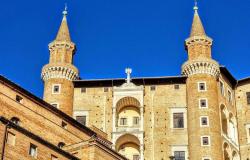 (ANSA) - The common belief that Michelangelo designed the uniform of the Swiss Guard is a myth, according to the first insider's history of the colourful and secretive corps.
(ANSA) - The common belief that Michelangelo designed the uniform of the Swiss Guard is a myth, according to the first insider's history of the colourful and secretive corps.
"No document has been found supporting that story," said Guard member Christian Roland Marcel Richard, a sergeant who
has spent eight years researching and writing the history. Michelangelo was a lot of things. A tailor he wasn't".
One of the topics covered in Richard's history is the many makeovers of the uniform.
The last tweak came in 1914, when the coat-tails were slightly lengthened.
Sergeant Richard took almost 3,000 hours to write Swiss Guards Across The Centuries, snatching time during his offical duty guarding papal masses and audiences or on night watch.
"That's an average of one hour's overtime a day, but he wasn't paid for it," quipped the corps' commander, Colonel Elmar Theodor Maeder.
"It's true, an hour a day, like a rosary," the author wryly responded. Presenting Richard's book on Thursday, Maeder said "it's
the first book written by a guard, not an historian. I'm sure the reader will feel the spirit of devotion to the pope".
Richard said "we are honour guards who represent the Vatican but above all we are ready to sacrifice our lives," recalling the oath of duty sworn every June 6.
The first part of the book charts the history of the Guard from its inception as military bodyguards on whose neutrality and devotion the pope could count. One of the most exciting events recorded is a new account of a furious battle inside the Vatican during the Sack of Rome in 1527.
Some 147 Guards died heroically defending the life of Pope Clement VII (Giulio de' Medici) against the rampaging army of Emperor Charles V. Richard's book lists the names of popes and corps commanders over the last five centuries, with tidbits of
information on each.
This part features a host of historical documents and, moving into more recent times, an array of fascinating period photos.
The second part details the sometimes arcane rules and regulations that govern the Guard.
The Guard was founded by Julius II, the pope who commissioned some of Michelangelo's major works including the Sistine Chapel.
The Guard is the world's smallest army and gets its recruits from a group of Swiss towns and villages which for centuries have provided the Pope's personal mercenaries. During the Middle Ages and in Renaissance times, the Swiss had the reputation of being Europe's most reliable mercenaries - tough fighters who hardly ever changed sides.
The 110-strong Guard, who have recently overcome a recruiting crisis, wear the antique blue and orange uniforms which generations of tour guides have happily attributed to Michelangelo.
Recruitment terms are strict. Candidates have to be single males over the age of 18, at least 1.74m tall, and practising Catholics "of stainless character".
They also have to have completed their compulsory military service in Switzerland.
Swiss Guards sign on for a minimum of two years. In the past the corps has been seen as a springboard for lucrative posts in some of the world's best-known security services and banks.
But fewer young Swiss were drawn to the job in the late 1990s, spurring a fall in the number of volunteers.
Maeder said Thursday this recruitment slump was reversed by an appeal to more devoted Swiss men. Many of the guards go on to be priests, he said.
"We want to support the young men along this path."
"Recruits are looking for adventure in the shape of new experiences, a new language and culture, but their faith comes before all those," Maeder said.
In 2003 Maeder swore in the corps' first non-white guard, Dhani Bachmann, a native of India adopted by a Swiss family when he was five. Last year the commander said the Guard would never recruit women.
In other events celebrating the 500th anniversary of the Guard's foundation, the Vatican is set to issue commemorative coins and stamps. There will also be a march from Switzerland to Rome along the original route taken by the first 150 recruits called by Julius II. It will arrive in the Vatican for a ceremony next June marking the date when the corps officially came into existence.








